With their fluffy white coats, perky ears, and fox-like faces, the American Eskimo Dog is a breed that captures attention wherever they go. But while pristine white may be the most iconic color associated with this Nordic breed, American Eskimos actually come in diverse shades that add to their beauty and appeal.
In this in-depth article, we will uncover the origins of this multifaceted breed, dive into the genetics behind their coat colors, learn about rare and unique color variations, and provide tips for grooming and care to maintain their exquisite coats. Whether you’re a seasoned Eskie owner or are considering welcoming one of these charismatic dogs into your life, read on to gain valuable insights into the captivating world of the American Eskimo Dog.
Table of Contents
- 1 Origins: From Circus Performers to Companions
- 2 Appearance: A Stunning Spitz
- 3 Personality: The Bright, Bouncy Companion
- 4 Coat Color Genetics: Unlocking the Eskie’s Vibrant Hues
- 5 Classic Colors: White, Biscuit and Cream
- 6 Grooming & Care for Vibrant Coats
- 7 The Allure of the Multicolored Eskie
- 8 Related posts:
- 9 Unveiling the American Eskimo Dog Temperament: A Detailed Guide
- 10 Complete Guide to Raising an American Eskimo Puppy
- 11 American Eskimo Dog: Breed Facts & Care
- 12 American Eskimo Dog Shedding: What to Expect!
Origins: From Circus Performers to Companions
With their snowy appearance and agile nature, one may assume the American Eskimo Dog originated in the frosty landscapes of Alaska. But these dogs actually trace their roots back to European Spitz breeds introduced to the United States by German immigrants in the early 1900s.
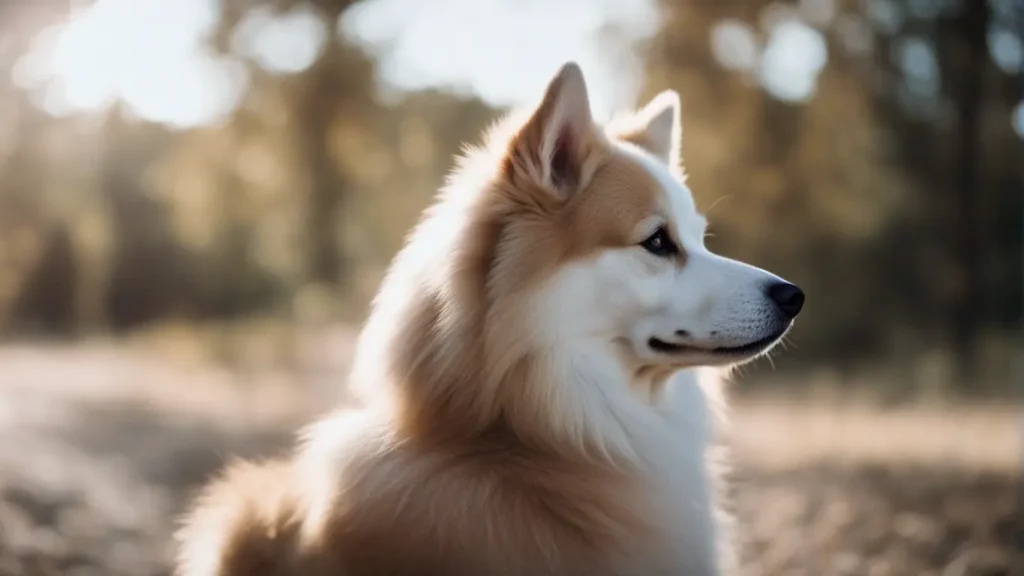
Originally known as “German Spitz,” these intelligent dogs excelled at various jobs, from herding livestock to guarding property. However, their trainability and showmanship led them into the spotlight as performers in traveling circuses and vaudeville shows during the late 19th and early 20th centuries. Their thick coats also helped them withstand harsh weather while on the road.
After World War II led to the decline of circus popularity, the American Eskimo faced an uncertain future. However, a core group of enthusiasts dedicated themselves to preserving the breed, leading to AKC recognition in 1995. Today, the American Eskimo Dog lives on as a lively companion animal and remains a star in the show ring.
Appearance: A Stunning Spitz
The American Eskimo Dog breed standards describe these dogs as medium-sized Spitz with compact, muscular bodies covered in a lush stand-off double coat. They have a broad head with triangular, erect ears and a plumed tail that curves over their back. Their dark eyes gleam with intelligence, while their jet-black lips and nose contrast starkly against their light fur.
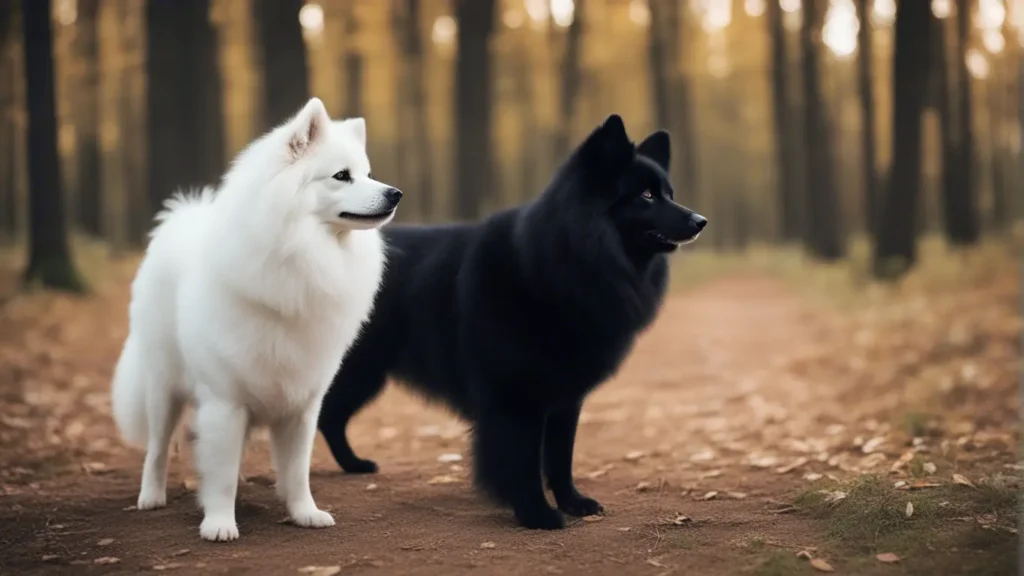
One of the American Eskimo Dog’s most distinctive features is its lavish coat, consisting of a dense undercoat and longer guard hairs. This double coat provides insulation from both heat and cold. When properly groomed, the fur stands away from the body, giving the Eskie its signature “fluff.”
There are three recognized size variations in the breed:
- Toy: 9-12 inches tall, 6-10 pounds
- Miniature: 12-15 inches tall, 10-20 pounds
- Standard: 15-19 inches tall, 25-35 pounds
Personality: The Bright, Bouncy Companion
Beneath all that fluff beats the heart of an affectionate and lively companion. American Eskimo Dogs form strong bonds with their owners and aim to please them. They are gentle with children, friendly towards strangers, and get along well with other pets when properly socialized from a young age.
These clever dogs relish training and mental stimulation. Their circus history proves they excel at dog sports and canine freestyle. But without proper activity, their sharp minds and energetic nature can lead to boredom and unwanted behaviors like excessive barking. Providing daily exercise and playtime is critical for a happy, balanced Eskie.
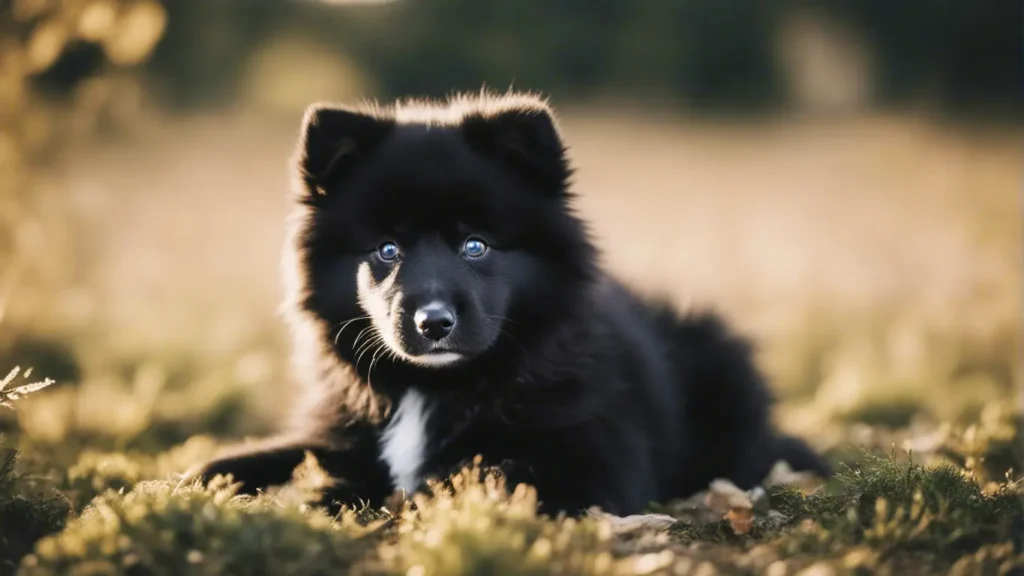
As part of the Spitz family, the American Eskimo Dog is vocal and will alert their owners to anything unusual. But this trait should always be balanced with problem barking. Early socialization and training are vital to shape budding behaviors. With patience and positive reinforcement, these quick studies will thrive.
Coat Color Genetics: Unlocking the Eskie’s Vibrant Hues
Now that we’ve covered this captivating breed’s origins and traits, let’s explore the genetics behind their stunning coat colors.
As in all dogs, coat color in American Eskimo Dogs is influenced by the pigment-producing cells known as melanocytes. These cells create the dark pigment melanin, which results in black, brown, or yellow fur. Genes control the distribution and concentration of melanin.
Some coat colors are linked to dominant gene variants, which means only one copy of the gene is needed for that color to appear. Recessive variants require two copies to manifest. Understanding these gene combinations helps explain how specific colors are passed down in Eskie litters.
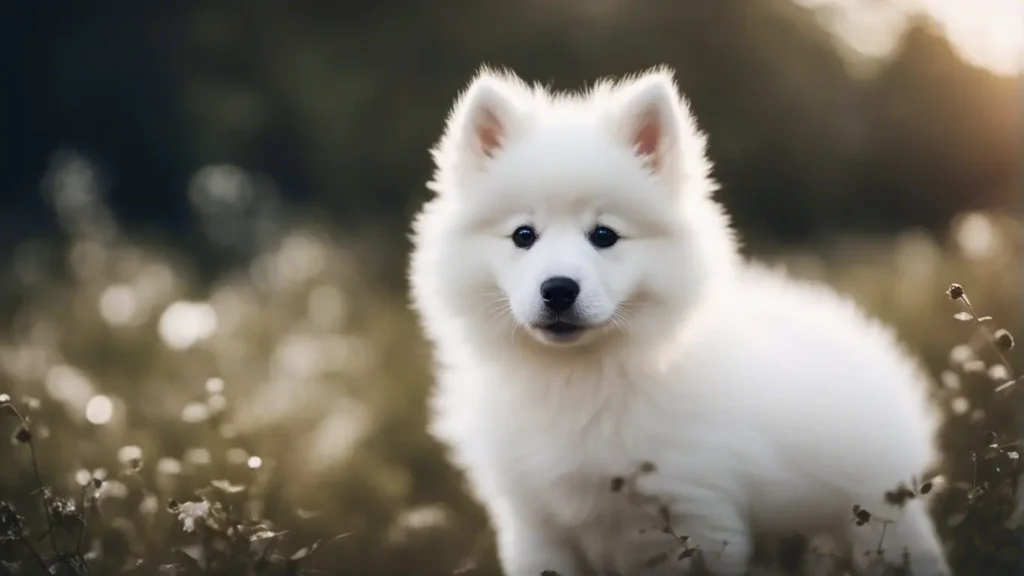
Here are some of the critical genes that impact the American Eskimo Dog’s kaleidoscope of colors:
Agouti Signaling Protein (ASIP) Gene
One of the primary genes influencing coat color is ASIP, which controls the distribution of black or yellow pigment across each hair shaft. Variants of this gene are linked to specific patterns:
- Dominant Ay – Solid white or cream coat
- Recessive at – Sable or Agouti coat pattern
Melanocortin 1 Receptor (MC1R) Gene
The MC1R gene activates melanin production in melanocytes. Variants of this gene dictate whether eumelanin (black/brown pigment) or phaeomelanin (red/yellow pigment) is produced:
- Dominant E or Em alleles – Black pigment
- Recessive e allele – Allows phaeomelanin production
Tyrosinase-Related Protein 1 (Tyrp1) Gene
Tyrp1 impacts the production of eumelanin. Specific variants dilute black pigment to create bluish or grayish tones:
- Recessive b or bd alleles – Dilutes black to gray or blue
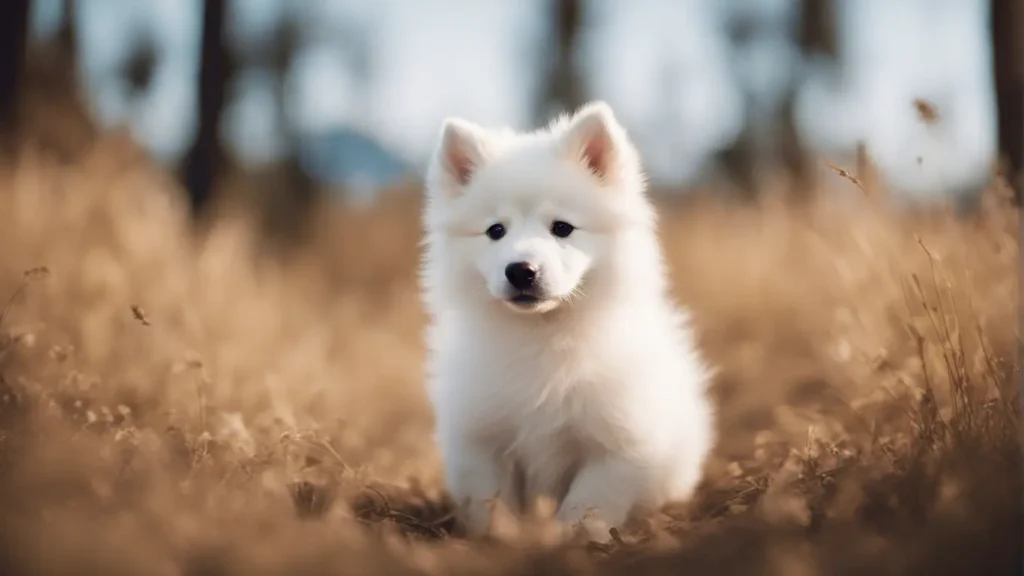
With hundreds of possible genetic combinations, breeders must make careful selections to achieve their desired colors. Now, let’s look at some of the most popular hues in the breed.
Classic Colors: White, Biscuit and Cream
When you picture an American Eskimo Dog, a pure white coat likely comes to mind first. This snowy white color is linked to the dominant Ay alleles of the ASIP gene. White is the most common and preferred color in the breed.
Biscuit or cream Eskies also carry Ay but with additional genetic factors that dilute the coat to pale yellow or beige. The intensity of the biscuit can range from almost white to rich gold. Cream is a warm muted shade with more gray tones.
Rarer Color Variations: Sable, Gray, and Red
While white remains the popular standard, some Eskies exhibit more unique colors linked to recessive genes:
Sable coats feature a mix of white and red/brown hairs, producing an intriguing color pattern. Sable is tied to the at alleles.
Gray or blue coats occur when Tyrp1 alleles dilute the black pigment. This results in stunning icy gray or charcoal blue tones.
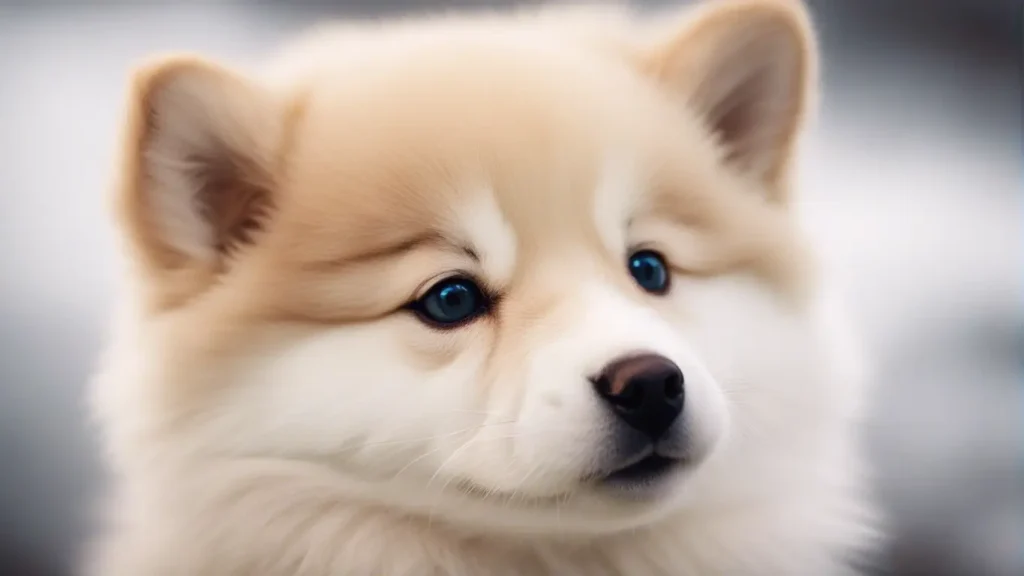
Red or reddish-brown coats stem from recessive MC1R alleles, making phaeomelanin visible.
Though beautiful, these non-standard colors are generally not preferred by breeders aiming to adhere to accepted standards for the show ring. But beyond the realm of dog shows, these diverse hues add depth and uniqueness to the breed.
Grooming & Care for Vibrant Coats
Now that we’ve reviewed the significant factors impacting Eskie coat colors let’s look at some grooming and care tips to keep their coats healthy and vibrant.
Frequent Brushing
As heavy shedders, American Eskimo Dogs require diligent brushing to control loose hair and prevent mats. Aim to brush at least 2-3 times per week. Slicker brushes and combs with widely spaced metal teeth work best to detangle the thick undercoat without scratching the skin.
Occasional Bathing
Overbathing strips the coat of protective oils. But periodic bathing every 4-6 weeks using a mild dog shampoo keeps their coat fresh and clean. Ensure you rinse thoroughly. After bathing, blow dry their coat on a low heat setting to prevent chilling.
Protection from the Elements
Direct sun exposure or harsh weather can damage and discolor the coat. Limit time outdoors during peak sun hours. Provide shade, sunscreen, and light protective gear like doggie sweatshirts. Avoid shaving their coat, which offers natural insulation.
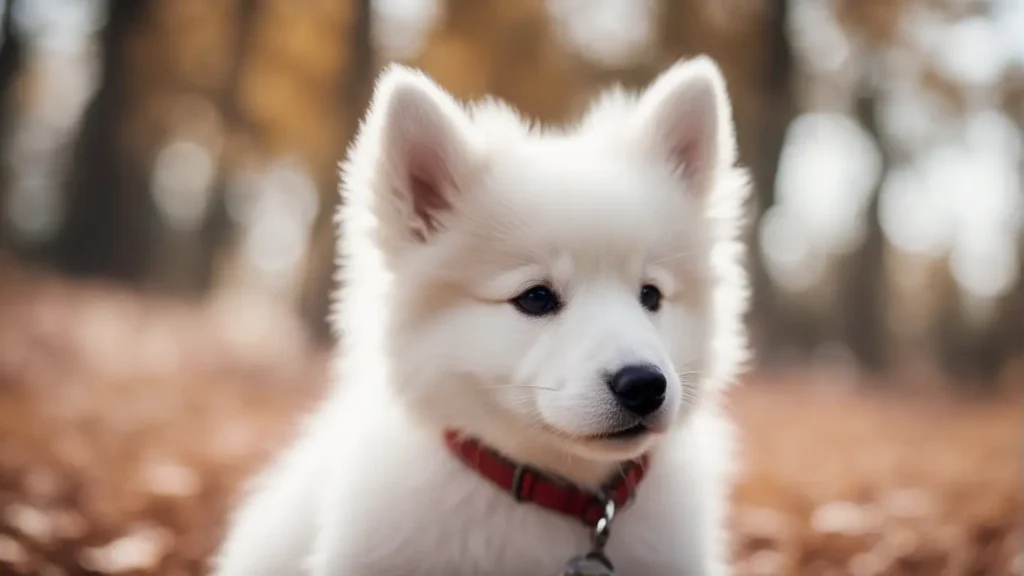
Quality Nutrition
A diet rich in omega fatty acids promotes skin and coat health. Choose a high-quality food formulated for active breeds. Supplement with salmon oil or vitamins as recommended by your veterinarian.
Professional Grooming
In addition to home grooming, occasional professional grooming provides a deeper clean and trim for neglected areas like the sanitary region and paw pads. This helps keep your Eskie looking tidy.
You can keep your American Eskimo Dog’s coat color vibrant and eye-catching with the proper grooming techniques. Adapt your routine based on coat length, texture, and lifestyle. Your Eskie will shine with a bit of diligent care.
The Allure of the Multicolored Eskie
Part of what makes the American Eskimo Dog so unique is their range of stunning coat colors, from the purest white to the wealthiest sable. While kennel clubs may designate some hues as “preferred,” the truth is that all Eskie coats have beauty.
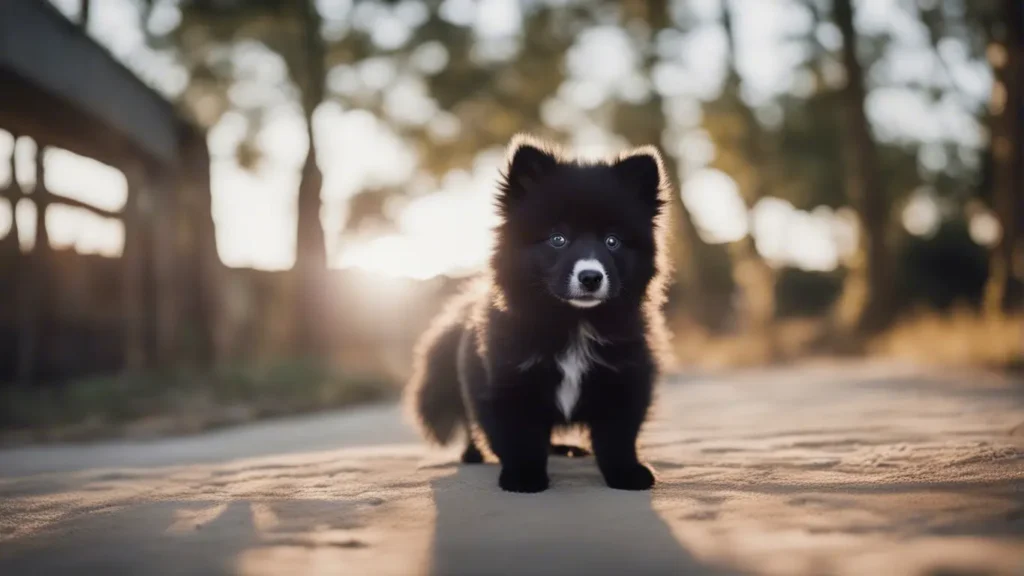
Rather than overly prioritizing color, the most ethical breeders focus on producing dogs of sound health and temperament. Coat color comes second to qualities like good structure, health clearances, and family-friendly disposition.
By celebrating the diverse palette of the American Eskimo Dog, we recognize that variation and uniqueness are what give this breed its spirit and charm. Each Eskie offers something unique, regardless of the colors wrapped up in their plush double coat.
So, if you’re considering welcoming one of these lively companions into your home, keep an open mind regarding color. Choose based on a connection with the individual dog, not preconceived notions of how they “should” look. Be open to the unexpected, and your American Eskimo Dog will shower you with love, no matter their shade.